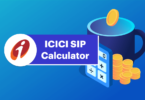You might be thinking stocks is the way to go since they have the highest returns. But, the greater the rewards – the greater would be the risks that are associated with it. That is why you can’t tie all of your investments to equity-linked saving tools. You will need schemes that assure you of returns and are more secure. By this, you know that there is a stable source of gains for your – irrespective of your investments into volatility. This is when small saving schemes come into the picture.
What are Small Saving Schemes?
The large-scale participation of the general public in various small-saving initiatives introduced by the central government is an important component of India’s financial savings picture. Small Saving Schemes (SSSs) are a major source of household savings in India in this context. Various small-scale saving plans have raised funds from people and channeled them to the government, allowing the center and states to fund a portion of their spending.
Small Savings Schemes (SSS) are run by the Central Government through a nationwide network of around 1.5 lakh post offices, over 8,000 public-sector bank branches and selected private-sector banks, and over 5 lakh small savings brokers.
1. Post Office Fixed Deposit
It is a post office scheme that is the same as offered by banks. The Department of Posts, considered the backbone of India’s communications structure, is the world’s largest, with 1,54,866 post offices across the country. The department is expanding its scope and functionality by diversifying into numerous categories such as insurance, money transfer, and retail services, among others, with roughly 1,39,040 post offices in rural areas alone.
The Post Office Savings Bank is the country’s oldest and largest financial institution. There are 238 million savings accounts in its system. The Department of Posts administers the Post Office Savings Bank programs on behalf of the Ministry of Finance.
2. Public Provident Fund
The Public Provident Fund was established in India in 1968 with the goal of mobilizing small deposits through investment and earning a return. It is also known as a savings-cumulative-tax savings investment vehicle since it allows you to save on annual taxes while building a retirement fund. A PPF account is a safe investment choice for anyone wishing to save taxes and earn assured profits.
The interest and refunds earned are not subject to income tax. This program requires the opening of a PPF account, with the amount contributed during the year being claimed under section 80C deductions.
3. Post Office Recurring Deposit
The post office offers nine government-backed savings programs, including the Post Office Savings Scheme. The Post Office offers a recurring deposit as a medium-term savings option. Depositors will be required to keep their money for at least five years under this arrangement.
Since they are not market-dependent, recurring deposits are thought to be risk-free. Recurring deposits are ideal for low-risk investors as well as first-time investors who are putting their money into a scheme for the first time. The recurring deposit system requires a fixed sum to be deposited into the account on a regular basis, with interest compounded quarterly.
4. Kisan Vikas Patra
Kisan Vikas Patra is a small savings instrument that allows people to put money aside for the future. India Post started this service in 1988. Despite its popularity, a government committee formed in 2011 warned that KVP might be used for illegal objectives such as money laundering. Kisan Vikas Patra was relaunched in 2014 with several revisions, including the requirement of PAN card proof for investments over Rs.50,000 and income source proof for investments over Rs.10 lakh.
The availability and simplicity of the KVP investment process are its key benefits; KVP certificates are issued in Post Offices across the country. Any resident Indian can invest in a KVP scheme and get a certificate in their own name or on behalf of a minor. In 9 years and four months (i.e., 112 months) from the time they were issued, the principal amount invested in KVP will have doubled. People in semi-urban and rural areas are the primary target demographic for this program.
5. Sukanya Samriddhi
Sukanya Samriddhi Yojana (SSY) is a small deposit scheme for girls that was introduced as part of the ‘Beti Bachao Beti Padhao’ campaign. It is now 8.1% and offers an income tax credit under Section 80C of the Internal Revenue Code of 1961. In the program, even the returns are tax-free.
6. Senior Citizens Savings Scheme
For the ones who are over the age of 60 – the Senior Citizen Savings Scheme (SCSS) is a favored fixed-income investment option. The basic aim of the Scheme is to assist senior persons in securing a steady stream of income after they retire. Since SCSS is a government-backed investment scheme – it gives quarterly assured returns. This Scheme is available in India through approved banks and post offices.
7. Post Office Monthly Income Scheme
POMIS is one of many financial products and services offered by the Post Office, which is regulated by the Finance Ministry. As a result, it is quite dependable. It’s a low-risk MIS that pays out consistently.
The investment duration is five years, and you can invest up to Rs.4.5 lakh individually or Rs. 9 lakh collectively. Its major goal is to safeguard assets. The interest rate is 6.6% per annum, payable monthly.
Why are Small Saving Schemes Beneficial?
If you are wondering how these small saving schemes help you, here are some advantages that you would not want to miss out on:
- Individuals can invest in savings programs to reach long-term goals such as retirement planning, children’s schooling, and children’s marriage.
- Since the schemes were founded by the Indian government, the donations made to them are low-risk and safe.
- There are numerous savings plans accessible right now. The perks differ depending on the program and the industry.
- Maintenance and investment in the plans are fairly straightforward, and most contributions can be made online.
Conclusion
You can start off small – but the key here is to start off. When you know your risk appetite is low, and you cannot face any risks, one of these schemes is the best choice for you.






